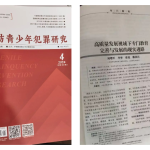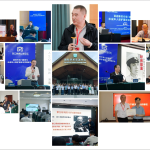Recognizing patterns in history and art is more than an academic exercise; it is a powerful tool for uncovering hidden opportunities that shape our world. Patterns—recurring motifs, behaviors, or themes—serve as clues that help us understand underlying structures and anticipate future shifts. When we learn to interpret these signals, our perception of chances and decision-making becomes sharper, opening doors to innovation and personal growth.
This article explores how patterns in historical events and artistic expressions reveal opportunities often overlooked at first glance. By examining concrete examples, we demonstrate how understanding these patterns can inform present-day decisions and inspire future creativity.
- The Concept of Patterns in History and Art
- Uncovering Hidden Chances Through Historical Patterns
- Art as a Window to Hidden Opportunities
- The Intersection of Patterns, History, and Art
- Modern Pattern Recognition: The Lady In Red
- Deepening Understanding: Surprising Connections
- Practical Applications Today
- Conclusion
The Concept of Patterns in History and Art
Patterns in history manifest as recurring political cycles, economic booms and busts, or social movements that repeat over time. For instance, the cyclical rise and fall of empires—such as Rome, Byzantium, or the British Empire—demonstrate how underlying structural forces influence societal stability and change. Recognizing these cycles allows historians and analysts to anticipate potential upheavals or opportunities.
Similarly, in art, recurring motifs—such as the use of light and shadow in Baroque paintings or the symbolic use of color—serve as reflections of cultural themes and individual insights. These patterns encode societal values, political messages, or personal emotions, offering viewers a glimpse into the societal mindset of different eras.
Both domains reveal how repeated elements—whether in behavior or design—indicate deeper structures that influence human experience, providing clues for those attuned to recognize opportunities hidden within these patterns.
Uncovering Hidden Chances Through Historical Patterns
Historical analysis shows that pivotal moments often hinge on overlooked opportunities or misjudged risks. For example, the discovery of the New World by Christopher Columbus was partly driven by patterns of trade routes and navigation techniques. Recognizing these maritime patterns could have predicted such explorations, but the chance was only seized due to a combination of technological innovation and timely decision-making.
Timing and chance play crucial roles. The Industrial Revolution, for example, was facilitated by a confluence of technological advances, economic conditions, and social readiness—factors that often go unnoticed until they align perfectly. By studying these patterns, modern analysts can forecast upcoming shifts, such as the rise of digital currencies or renewable energy markets.
Understanding historical patterns thus equips us to identify opportunities that others might overlook, turning mere chance into strategic advantage.
Art as a Window to Hidden Opportunities
Artists often encode signals about societal or personal opportunities through their work. For example, the Impressionists' focus on capturing fleeting moments reflected a broader societal shift towards embracing change and modernity. Analyzing these artistic choices reveals how cultural movements respond to or anticipate societal opportunities.
Technological innovations influence art and fashion profoundly. Take the example of the iconic Lady In Red—her striking appearance embodies how color can symbolize chance, passion, and bold decision-making. In contemporary society, visual cues like this continue to signal opportunities; for instance, the use of bold colors in branding or fashion often aims to capture attention and evoke specific emotional responses.
Artists encode signals about social or personal chances, subtly guiding viewers to recognize opportunities in their environment. Recognizing these signals can inspire us to act or adapt in our own lives, much like how a keen observer might notice that vintage camera scatter symbol is what you want in a game, hinting at hidden opportunities or advantages.
The Intersection of Patterns, History, and Art
Historical and artistic patterns often inform and reinforce each other. For example, the Renaissance period saw a revival of classical motifs, which in turn influenced the political and philosophical ideas of the time. Art became a reflection and a catalyst for societal change, illustrating how recognizing these intersections can spark innovation.
Conversely, societal shifts inspire new artistic expressions. The emergence of jazz music in the early 20th century, for instance, was rooted in African American cultural patterns and social opportunities. Similarly, modern art movements like Abstract Expressionism respond to societal upheavals, highlighting how patterns in history and art continually shape each other.
Recognizing these interconnected patterns offers a multi-faceted perspective that can drive future innovation, whether in technology, culture, or social organization.
Modern Illustration of Pattern Recognition: The Lady In Red as a Symbol of Hidden Chances
The color red has long held cultural significance, symbolizing passion, danger, and opportunity across different civilizations. In art and fashion, the Lady In Red exemplifies how visual cues can embody the essence of unlocking chances—her boldness and striking appearance signal bold decisions and opportunities that might be hidden to the untrained eye.
In contemporary society, visual signals like the Lady In Red serve as metaphors for recognizing opportunities in a crowded environment. For example, in business or social situations, a person dressed in red might be signaling confidence and readiness to seize chances, much like the visual cue of that vintage camera scatter symbol is what you want in a game. that vintage camera scatter symbol is what you want—a reminder that symbols and cues can guide us toward hidden opportunities if we pay attention.
Deepening Understanding: Surprising Connections and Non-Obvious Factors
Technological advances often influence artistic expression and chance. For instance, the invention of red nail polish in 1925 not only transformed fashion but also reflected broader social opportunities for women to express independence and boldness. Such innovations serve as catalysts for cultural shifts that open new avenues for personal and societal chances.
Unexpected historical facts further illustrate overlooked opportunities. The advent of jazz records at 78 RPM, for example, revolutionized music distribution and listening habits, creating new markets and artistic possibilities. These innovations often emerge from recognizing non-obvious factors—like eccentric personal stories or technological quirks—that can catalyze change.
Personal stories and eccentricities also highlight hidden chances. Josephine Baker’s pet cheetah, for example, was an unconventional symbol of daring and individuality, inspiring others to pursue bold, unconventional paths that could lead to unforeseen opportunities.
Practical Applications: Recognizing Patterns to Unlock Opportunities Today
To harness the power of pattern recognition, observe your environment carefully. Look for recurring themes—whether in market trends, social behaviors, or personal interactions—that might signal emerging opportunities. For instance, noticing shifts in consumer preferences can guide strategic decisions in business or career moves.
Lessons from history and art teach us to interpret signals critically, avoiding impulsive decisions. Developing a mindset of curiosity and pattern awareness can lead to innovative solutions and proactive responses to change. Regular reflection and analysis of patterns enable us to turn chance into deliberate opportunity.
Adopting these strategies empowers individuals and organizations to navigate complexity with confidence, transforming unseen signals into actionable insights.
Embracing the Unknown by Understanding Patterns in History and Art
"Pattern recognition is not merely about seeing what is visible, but perceiving what lies beneath the surface—unveiling opportunities hidden in plain sight."
In summary, understanding the patterns embedded within history and art enriches our perception of opportunities. These insights serve as guides, helping us navigate an increasingly complex world with confidence and creativity. Recognizing the interconnectedness of past and present fosters a mindset receptive to innovation and discovery, encouraging us to look beyond the surface and uncover the unseen.
By honing our ability to detect subtle signals and recurring themes, we open ourselves to a realm of possibilities—transforming chance into choice and uncertainty into opportunity.


.png)


















